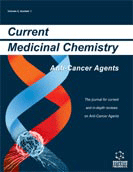Abstract
Although 5-fluorouracil (FU) was first introduced in 1957, it remains an essential part of the treatment of a wide range of solid tumors. FU has antitumor activity against epithelial malignancies arising in the gastrointestinal tract, breast as well as the head and neck, with single-agent response rates of only 10-30%. Although FU is still the most widely prescribed agent for the treatment of colorectal cancer, less than a third of patients achieve objective responses. Recent research has focused on the biomodulation of FU to improve the cytotoxicity and therapeutic effectiveness of this drug in the treatment of advanced disease. As all the anticancer agents, FU leads to several toxicities. The toxicity profile of FU is schedule dependent. Myelotoxicity is the major toxic effect in patients receiving bolus doses. Hand-foot syndrome (palmar-plantar erythrodysesthesia), stomatitis, neuro- and cardiotoxicity are associated with continuous infusions. Other adverse effects associated with both bolus-d ose and continuous infusion regimens include nausea and vomiting, diarrhea, alopecia and dermatitis. All these reasons explain the need of more effective and less toxic fluoropyrimidines. In the first part of the review, we briefly present the metabolic pathways of FU responsible for the efficacy and toxicity of the drug. This knowledge is also necessary to understand the target(s) of the biomodulation. The second part is devoted to a review of the literature on the various prodrugs of FU, including 5-deoxy-5-fluorouridine, capecitabine, BOF-A2, ftorafur, UFT, and S-1. The promising approach of gene directed enzyme-prodrug therapy is also presented. A brief survey of antibody directed enzyme-prodrug therapy and some new FU prodrugs concludes the paper. The pharmacological principles that have influenced the development of these new drugs and our current knowledge of the clinical pharmacology of these new agents, focusing on antitumor activity and toxicity, are presented.
Keywords: 5-Fluorouracil, cardiotoxicity, fluoropyrimidines, thymidylate synthase (TS), dihydropyrimidinase, deoxyuridine triphosphate pyrophosphorylase, Capecitabine, Cytosine Deaminase, Thymidylate synthase, Dihydropyrimidine dehydrogenase, 3-Cyano-2,6-dihydroxypyridine
 11
11

















